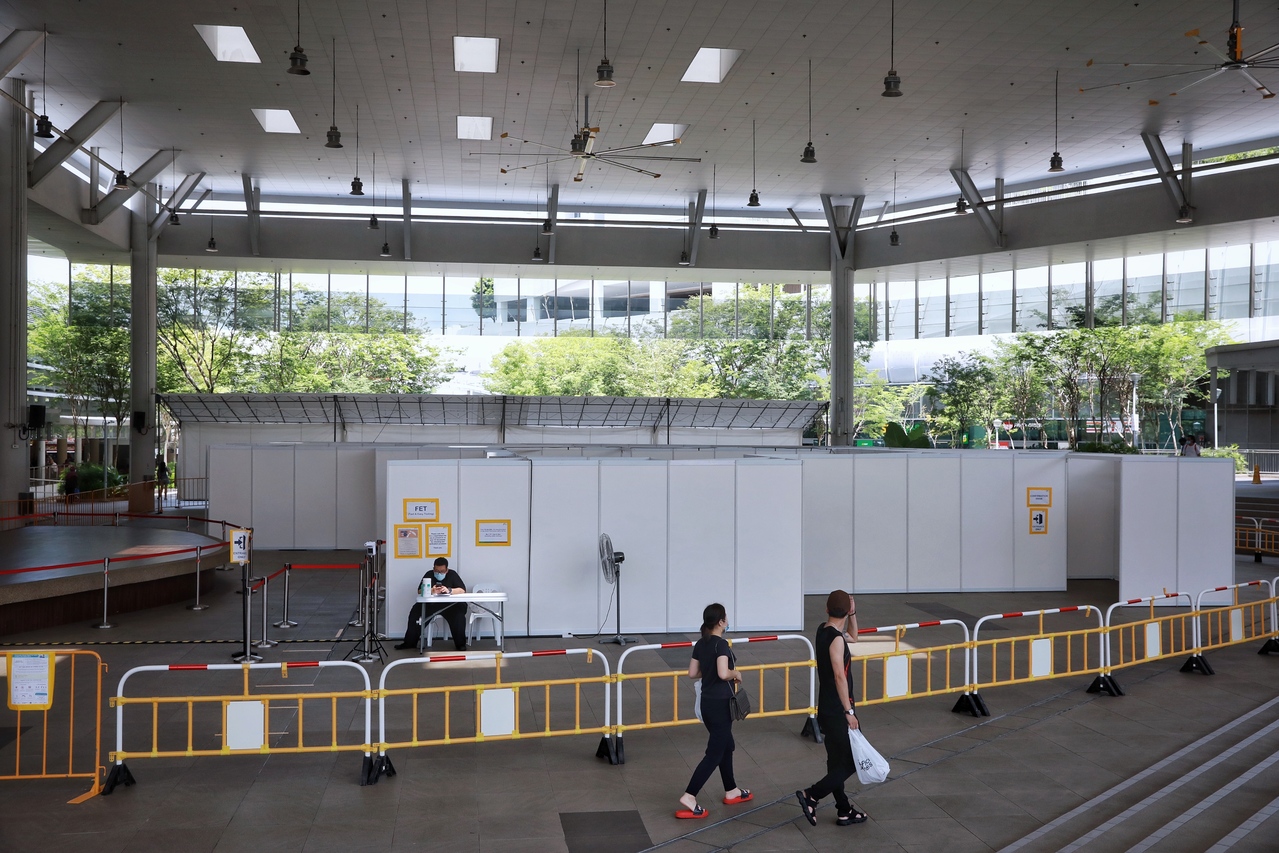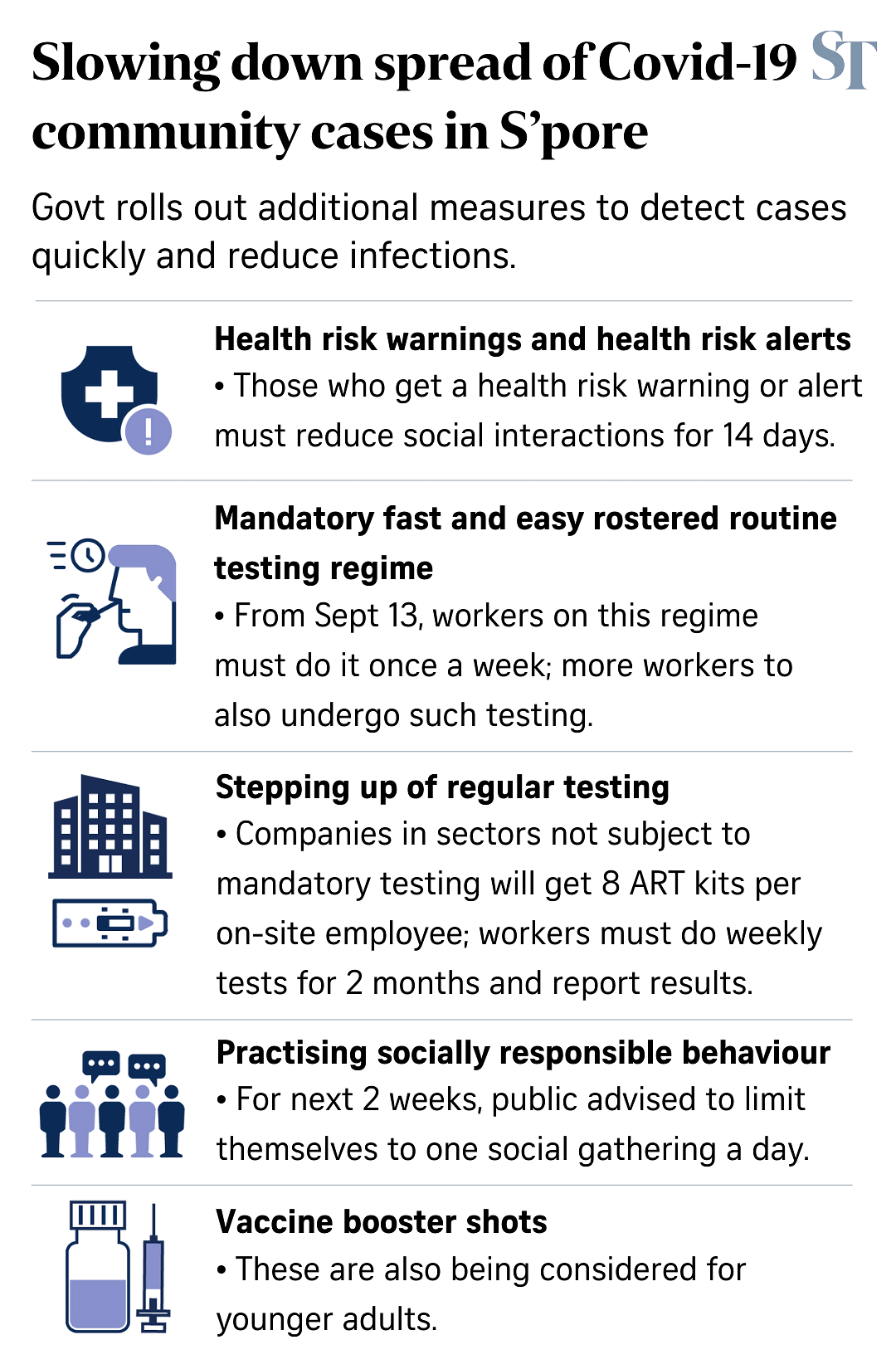What's the difference between Covid-19 quarantine order, health risk warning and health risk alert?
Sign up now: Get ST's newsletters delivered to your inbox

A quick test centre for those who have been issued a health risk warning, next to Bedok Interchange Hawker Centre on July 18, 2021.
PHOTO: ST FILE
Timothy Goh
Follow topic:
SINGAPORE - As part of measures to contain the spread of Covid-19, health risk warnings (HRWs) and health risk alerts (HRAs) will be issued to people whenever a new cluster is detected.
The Straits Times finds out the differences between HRWs, HRAs and quarantine orders.
1. Who is it issued to?
A quarantine order is given to people who have or are suspected to have Covid-19, or are a close contact of a Covid-19 case.
A health risk warning is issued to those who, based on SafeEntry data, have been in close proximity with a Covid-19 case for an extended period, or are identified as a close contact of a case.
Such people have a risk of infection that is lower than those who are issued a quarantine order, but higher than those who receive a health risk alert.
A health risk alert is sent to people whose SafeEntry records from the past 14 days overlap with those of a Covid-19 case.
This group of people is considered to have the lowest risk of infection out of the three, and may simply have been in the same mall at the same time as an infected person without interacting with them.
2. What should people do if they receive one of them?
Those who receive a quarantine order must follow the instructions provided, which will include isolating themselves either at a dedicated government quarantine facility, a hospital, or their home if it is suitable.
The exact location depends on the Ministry of Health's (MOH) assessment of their contact history, state of health, and suitability of their home.
Those under quarantine will typically be tested for the disease using a polymerase chain reaction (PCR) test at the start and end of their quarantine period.
The swab tests are arranged by appointments only, and are conducted at designated testing sites. Two-way transportation will be provided to and from the sites.
The Government will pay for tests taken while under quarantine order.

<p>A visitor checking out using a token on a SafeEntry Gateway box at The Star Vista on June 29, 2021.</p>
PHOTO: ST
Those who receive an HRW need to get a PCR test at a designated testing centre.
They have to isolate themselves until their test result comes back negative.
Later, they will have to perform a self-test using an antigen rapid test (ART) kit seven days from their last exposure to the confirmed case.
Finally, they will need to take another PCR test at a designated testing centre 14 days from their last exposure to the confirmed case.
Those who get tested as a result of their HRW will have their tests fully paid for by the Government.

<p>art / ST2021072 NO NUMBER / Alphonsus Chern // Generic photograph of a child having an Antigen Rapid Test swab taken using an Abbot Panbio home test kit 22 July 2021.</p>
PHOTO: ST
Meanwhile, those who receive an HRA simply need to monitor their health for 14 days.
While they are not required to get tested, they are encouraged to perform self-tests throughout the 14-day period using ART self-test kits.
Although they do not need to quarantine themselves, those who receive an HRW or HRA should reduce their social interactions.
3. Is it legally binding?
A quarantine order and an HRW are both legally binding under the Infectious Diseases Act.


